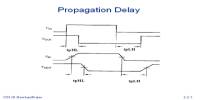Magnetoresistance refers to the change in the electrical resistance of a material when it is subjected to a magnetic field. This phenomenon is due to the interaction between the magnetic field and the electrons in the material, which affects their mobility and the scattering of the electrons.
Magnetoresistance is a material’s (often ferromagnetic) tendency to change the value of its electrical resistance in the presence of an externally applied magnetic field. Magnetoresistance refers to a number of different effects. Geometrical magnetoresistance, Shubnikov-de Haas oscillations, and the common positive magnetoresistance in metals are all observed in bulk nonmagnetic metals and semiconductors. Other effects in magnetic metals include ferromagnetic negative magnetoresistance and anisotropic magnetoresistance (AMR). Finally, giant magnetoresistance (GMR), tunnel magnetoresistance (TMR), colossal magnetoresistance (CMR), and extraordinary magnetoresistance (EMR) can be observed in multicomponent or multilayer systems (e.g. magnetic tunnel junctions).
Types
There are two types of magnetoresistance: ordinary magnetoresistance (OMR) and giant magnetoresistance (GMR).
OMR is a relatively small change in resistance that occurs when a magnetic field is applied perpendicular to the direction of current flow in a conductor. This effect is observed in metals and alloys and is due to the Lorentz force on the charge carriers in the material.
GMR, on the other hand, is a much larger effect that occurs in magnetic multilayer structures composed of alternating layers of ferromagnetic and non-magnetic materials. The resistance of such a structure depends on the relative orientation of the magnetization in the ferromagnetic layers, and a change in the external magnetic field can cause a significant change in resistance.
GMR has important technological applications, particularly in magnetic data storage devices such as hard disk drives and magnetic random access memory (MRAM).
Discovery
William Thomson, better known as Lord Kelvin, discovered the first magnetoresistive effect in 1856, but he was unable to reduce the electrical resistance of anything by more than 5%. Semimetals and concentric ring EMR structures are known systems today. A magnetic field can change the resistance by orders of magnitude in these. Because different mechanisms can affect resistance, it is useful to consider situations where it is directly dependent on a magnetic field (e.g. geometric magnetoresistance and multiband magnetoresistance) and those where it is indirectly dependent through magnetization (e.g. AMR and TMR).
















